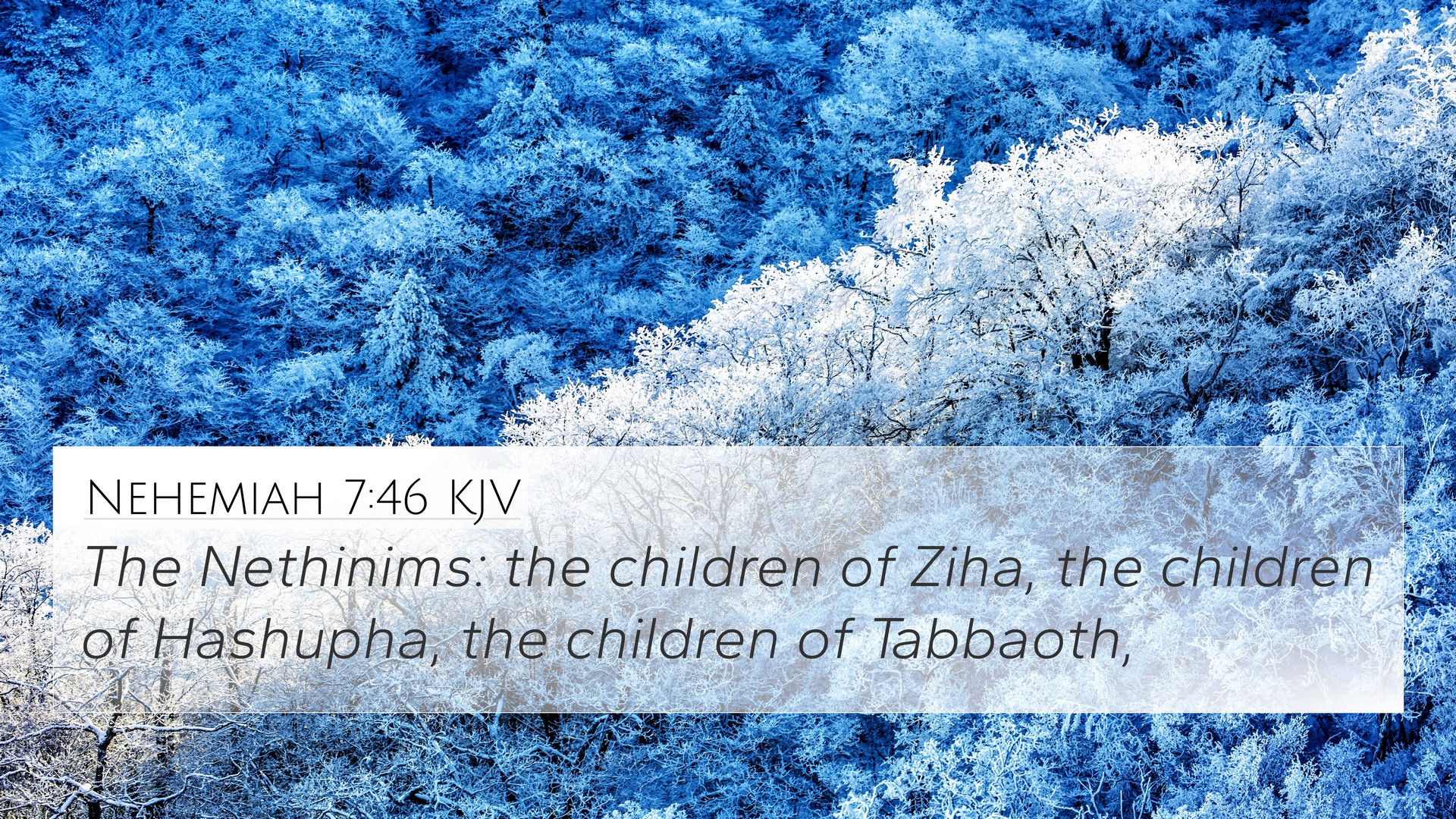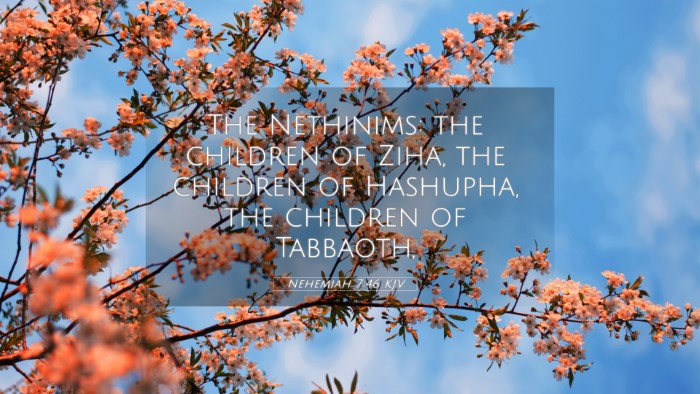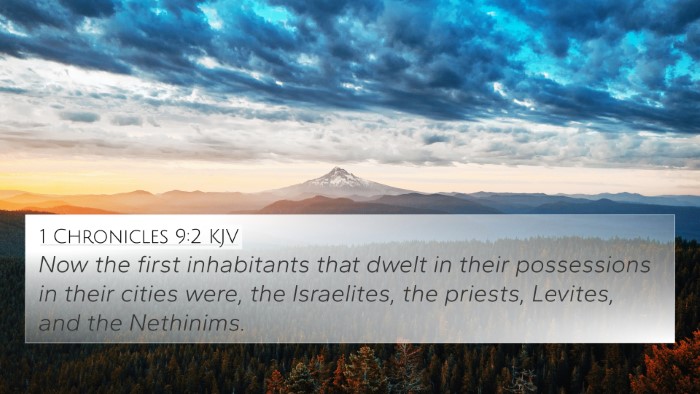Understanding Nehemiah 7:46
Nehemiah 7:46 states:
"The Nethinim: the children of Ziah, the children of Hashupha, the children of Tabbaoth."
This verse lists the descendants of a specific group who were temple servants, known as the Nethinim. The significance of this verse lies in its emphasis on the restoration of the Jewish community after the Babylonian exile, particularly the roles that various groups would play in rebuilding Jerusalem and serving in its temple.
Insights from Commentaries
This verse has been analyzed by several public domain commentaries:
- Matthew Henry: Henry emphasizes the structural importance of the Nethinim, pointing out that they represent the restoration of temple service and are integral to the community after the exile. He suggests that the Nethinim signify a broader principle of service to God and the congregation.
- Albert Barnes: Barnes focuses on the historical context, highlighting that the Nethinim were set aside for temple work, indicating their special status as servants of God. He connects this to the broader theme of restoration and the importance of dedicated service in the life of the Israelite community.
- Adam Clarke: Clarke discusses the genealogical aspect, noting the meticulous record of lineage which demonstrates the value placed on heritage and continuity within the Jewish faith. He underlines the idea that every individual and group mentioned had a role in fulfilling God’s plan and the continuity of worship practices.
Thematic Connections
Nehemiah 7:46 can be connected to several significant themes in the Bible:
- Restoration of worship practices (Ezra 3:10-13)
- Importance of service and the roles within the Church (1 Peter 4:10)
- Value of genealogies and lineage in God's plan (Matthew 1:1-17)
Cross-References
Here are key biblical verses that resonate with the themes found in Nehemiah 7:46:
- Ezra 2:43: Lists the Nethinim and their identity as temple servants, echoing Nehemiah's record.
- 1 Chronicles 9:2: Mentions the gatekeepers and servants, showing the breadth of those serving God.
- Joshua 9:27: Notes that Gibeonites became woodcutters and water carriers for the assembly of God.
- Psalm 84:10: Reflects the preciousness of serving in God’s courts, analogous to the service of the Nethinim.
- Matthew 25:21: Reminds of the reward for faithful service, relevant to the roles of those listed in Nehemiah.
- Romans 12:1: Calls for presenting oneself as a living sacrifice, paralleling the dedicated service of the Nethinim.
- Galatians 5:13: Discusses service to one another, akin to the teamwork and roles in rebuilding post-exile.
Understanding Biblical Context
The context of this verse is crucial in understanding its full meaning. Nehemiah is documenting the restoration of Jerusalem not just physically, but spiritually as well. The Nethinim, once seen as a marginalized group in Jewish society, are highlighted to show their restored importance and dedication to God's service.
Application of Nehemiah 7:46
For contemporary readers, this verse exemplifies the importance of every role within the body of Christ. Just as the Nethinim were vital for temple service, every individual in the church today plays a vital part in the spiritual community. This promotes an understanding of both individual and collective responsibility in worship and service.
Tools for Understanding and Cross-Referencing
To study verses like Nehemiah 7:46 and their connections effectively, utilizing tools for Bible cross-referencing is invaluable:
- Bible concordances
- Bible cross-reference guides
- Cross-reference Bible study methods
Learning Cross-Referencing Techniques
Understanding how to find and use cross-references can greatly enhance your Bible study. Here are some methods:
- Reading companion verses that speak on similar themes.
- Using a comprehensive Bible cross-reference system to trace themes across Scripture.
- Identifying connections between Old and New Testament writings.
- Creating your own thematic chains of reference based on personal study and insights.
Conclusion
Nehemiah 7:46, though a seemingly simple genealogical note, encapsulates profound themes of service, community, and restoration. By engaging deeply with this verse and its connections, readers can better appreciate the nuance of ancient scripture and its relevance today.






